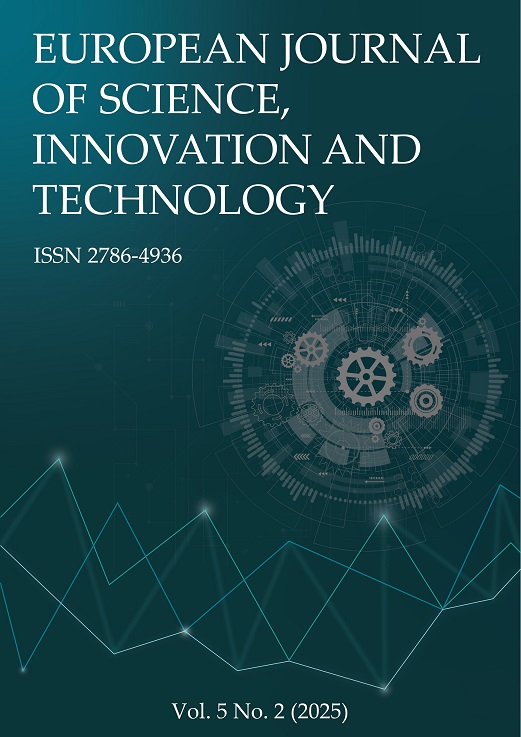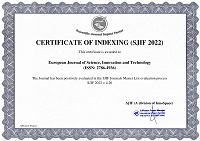Enhancing Evacuation Planning in High-Risk Areas: A Case Study of Laurel, Batangas, Philippines, Post-2020 Taal Volcano Eruption
Abstract
Effective evacuation planning is vital for safeguarding lives and minimizing damage during natural disasters. This study explores the challenges and opportunities associated with evacuation planning in Laurel, Batangas, Philippines, following the 2020 eruption of Taal Volcano. Anchored in the framework of the UNDRR’s Making Cities Resilient Campaign, the research focuses on evaluating evacuation route management and emergency shelter placement in a high-risk volcanic setting.
The study critically reviews historical eruption data and past evacuation responses, identifying key issues such as delayed response times, transportation limitations, and the area’s complex terrain. It further assesses the adequacy of existing evacuation centers and proposes improvements to optimize accessibility and safety.
Utilizing Geographic Information Systems (GIS) and spatial analysis, the research maps local street networks to identify optimal rescue points and alternative evacuation routes, particularly for the most vulnerable zones. These findings contribute to enhancing disaster preparedness and community resilience.
The study underscores the importance of developing context-specific evacuation strategies that reflect the unique characteristics of volcanic hazards. By addressing existing gaps in evacuation planning and integrating spatial tools, this research aims to support more effective and adaptive disaster risk reduction efforts in Laurel and other similarly vulnerable communities.
References
Anyoji, N. (2013). Technical efforts to prepare volcanic hazard maps. In Volcanic hazard maps of Japan (2nd ed., pp. 125–128). https://vivaweb2.bosai.go.jp/v-hazard/articles-e.html
Baxter, P. J., Aspinall, W. P., Neri, A., Zuccaro, G., Spence, R. J. S., Cioni, R., et al. (2008). Emergency planning and mitigation at Vesuvius: A new evidence-based approach. Journal of Volcanology and Geothermal Research, 178(3), 454–473. https://doi.org/10.1016/j.jvolgeores.2008.08.015
Borowski, E., Cedillo, V. L., & Stathopoulos, A. (2021). Dueling emergencies: Flood evacuation ridesharing during the COVID-19 pandemic. Transportation Research Interdisciplinary Perspectives, 10, 100352. https://doi.org/10.1016/j.trip.2021.100352
Delos Reyes Bornas, P. J., Dominey-Howes, M. A. V. D., Pidlaoan, A. C., Magill, C. R., Solidum, R.U., & Solidum Jr., R. U. (2018). A synthesis and review of historical eruptions at Taal Volcano, Southern Luzon, Philippines. Earth-Science Reviews, 177, 565–588. https://doi.org/10.1016/j.earscirev.2017.11.014
Gaurav, P., Kandel, K., Gautam, D., & Kharel, G. (2023). A GIS-based evacuation route planning in flood susceptible area of Siraha Municipality, Nepal. ISPRS International Journal of Geo-Information, 12(7), 286. https://doi.org/10.3390/ijgi12070286
Gehlot, H., Sadri, A. M., & Ukkusuri, S. V. (2019). Joint modeling of evacuation departure and travel. Transportation, 46, 2419–2440. https://doi.org/10.1007/s11116-018-9958-4
Golshani, N., Shabanpour, R., Mohammadian, A., Auld, J., & Ley, H. (2019). Analysis of evacuation ndestination and departure time choices for no-notice emergency events. Transportmetrica A: Transport Science, 15(2), 896–914. https://doi.org/10.1080/23249935.2018.1546778
Lim, M. B., Lim, H. Jr., & Piantanakulchai, M., & Uy, F. (2016). A household-level flood evacuation decision model in Quezon City, Philippines. Natural Hazards, 80, 1539–1561. https://doi.org/10.1007/s11069-015-2038-6
Lim, M. B., Lim, H. Jr., & Anabo, J. M. (2021). Evacuation destination choice behavior of households in Eastern Samar, Philippines during the 2013 Typhoon Haiyan. International Journal of Disaster Risk Reduction, 56, 102137.
Makinoshima, F., Abe, Y., Machida, G., & Takeshita, Y. (2017). Regional disaster resilience assessment based on population decline and road network connectivity: A case study of Tohoku, Japan. Geosciences, 7(4), 112. https://doi.org/10.3390/geosciences7040112
Municipality of Laurel Comprehensive Land and Water Use Plan (2013-2022).
PHIVOLCS. (2020a, January 12). Taal volcano bulletin – 12 January 2020, 7:30 PM. https://www.phivolcs.dost.gov.ph/index.php/taal-volcano-bulletin-menu/9620-taal-volcano-bulletin-12-january-2020-07-30-pm
PHIVOLCS. (2020b, January 13). Taal volcano bulletin – 13 January 2020, 3:20 AM. https://www.phivolcs.dost.gov.ph/index.php/volcano-hazard/volcano-bulletin2/taal-volcano/9622-eruption-update-for-taal-volcano-13-january-2020-03-20-am
Sadri, A., Ukkusuri, S., Murray-Tuite, P., & Gladwin, H. (2014). Analysis of hurricane evacuee mode choice behavior. Transportation Research Part C: Emerging Technologies, 48, 37–46. https://doi.org/10.1016/j.trc.2014.08.008
UNISDR. (2009). Terminology on disaster risk reduction. United Nations Office for Disaster Risk Reduction. https://www.unisdr.org/we/inform/terminology
UNISDR. (2015). Sendai framework for disaster risk reduction 2015–2030. United Nations Office for Disaster Risk Reduction. https://www.unisdr.org/we/coordinate/sendai-framework
Villegas, M. A., Contreras, J. C., & Garcia, J. R. (2022). Perspectives on the 12 January 2020 Taal Volcano eruption: An analysis of residents’ narrative accounts. Frontiers in Earth Science, 10, 923224. https://doi.org/10.3389/feart.2022.923224
Vista, A. B., & Rosenberger, R. S. (2015). Estimating the recreational value of Taal Volcano Protected Landscape, Philippines using benefit transfer. Journal of Environmental Science and Management, 18(1), 22–33. https://doi.org/10.47125/jesam/2015_1/03
Copyright (c) 2025 Claire Maurene Gratil-Peñamante

This work is licensed under a Creative Commons Attribution 4.0 International License.


 ISSN
ISSN 











